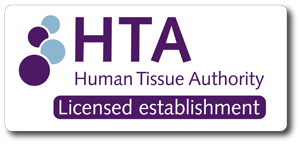What do you want to do?
The Senior Coroner for the South Yorkshire (West) jurisdiction is Mrs Tanyka Rawden who is based within the Medico-Legal Centre.
The Coroner is an independent Judicial Officer, responsible only to the Crown. They have a statutory duty to investigate sudden, violent or unexplained deaths. They must be legally qualified.
The Coroner does not work for the Council or any other organisation. However, the law requires that we provide the Coroner with the facilities to carry out their work.
About 40% of all deaths are reported to a Coroner, often because the cause of death is not immediately known. Approximately half of reported deaths require some form of post-mortem examination and, in the vast majority of cases, this will reveal a natural cause of death. However, around 18% (600+ cases per year locally) show an unnatural cause of death and require an inquest.
If someone close to you has died and their death has been reported to the Coroner, you can find out more about the investigation process from the gov.uk website.
Digital Autopsy
Digital Autopsy is a non-invasive technique that uses a CT scanner to create a 3D whole body digital image, which is considered by the Coroner’s pathologist alongside all other available evidence. The pathologist will then advise the Coroner if they believe the medical cause of death has been understood sufficiently, and if there is a need for a full invasive autopsy.
Record of Inquest
The Coroner's decision is set out in a formal document called the ‘Record of Inquest’. This states the identity of the deceased, the medical cause of death, the place of death and in what circumstances the deceased died. The form also records the court’s conclusion as to the death.
Conclusion
The conclusion (previously known as the verdict) categorises how the death came about. It can be short form, for example Accidental Death, Suicide, Misadventure etc. It is also common to use a narrative conclusion, which is a short factual statement of the Coroner’s finding as to how the death occurred.
All conclusions are returned on the balance of probabilities.
A conclusion which often achieves wider publicity is when a death has been contributed to by neglect. In the Coroner's court neglect has a very specific and narrow definition, and should not be confused with civil negligence. In the Coroner’s court it means that there was a gross failure to provide someone in a dependent position with adequate food, shelter or basic medical attention and that this led to their death.
What we do with your information
The coroner's office may store some personal information from your deceased relative, yourself and other members of your family. You can read our privacy notice to find out how this information is stored and how it may be shared.

